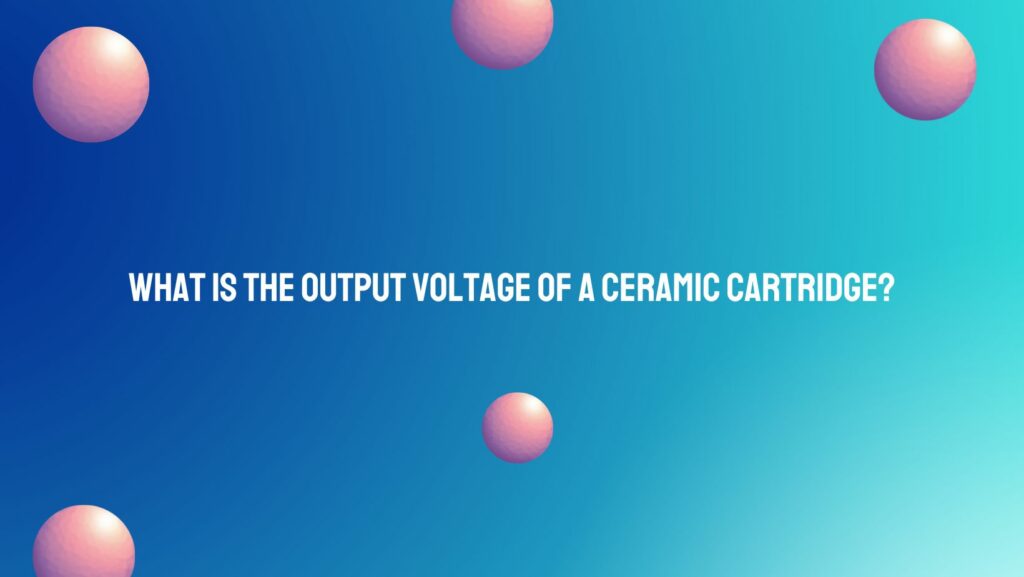Vinyl records have made a remarkable resurgence in recent years, attracting both seasoned audiophiles and newcomers to the world of analog audio. A crucial component of the vinyl playback system is the phono cartridge, which houses the stylus responsible for tracking the grooves on the record. Among the various types of phono cartridges, ceramic cartridges have their own unique characteristics, including their output voltage. In this article, we’ll explore what a ceramic cartridge is, how it works, and its typical output voltage.
Understanding Ceramic Cartridges
A phono cartridge is a transducer that converts the mechanical vibrations of a stylus tracking the grooves of a vinyl record into electrical signals, which are then amplified and converted into sound by an audio system. Ceramic cartridges are one of the oldest and simplest types of phono cartridges.
Ceramic cartridges contain a ceramic element that generates a voltage when subjected to mechanical vibrations. This voltage is a direct result of the stylus’s movement within the grooves of the record. Unlike their more modern counterparts, moving magnet (MM) and moving coil (MC) cartridges, ceramic cartridges do not require external power sources, making them self-generating.
Output Voltage of Ceramic Cartridges
The output voltage of a ceramic cartridge can vary depending on its design, the specific model, and the manufacturer. However, as a general guideline, most ceramic cartridges produce an output voltage in the range of 0.5 to 10 millivolts (mV). This is notably higher than the output of moving magnet or moving coil cartridges, which typically produce outputs in the range of 2 to 5 mV.
The reason for the higher output voltage of ceramic cartridges lies in their design and the piezoelectric properties of the ceramic material. As the stylus traces the grooves of the vinyl record, it generates vibrations that are then converted into electrical voltage by the ceramic element. This voltage is relatively low, but it’s sufficiently strong to drive the preamp section of most phono stages in amplifiers and receivers.
Pros and Cons of Ceramic Cartridges
Ceramic cartridges have their own set of advantages and disadvantages:
Pros:
- High output: The relatively high output voltage simplifies the need for additional amplification, which can be beneficial for budget-conscious setups.
- Self-generating: Ceramic cartridges are self-generating, meaning they do not require an external power source or an additional preamp stage. This can lead to cost savings.
Cons:
- Limited sonic fidelity: While ceramic cartridges are cost-effective and straightforward, they are often considered to provide lower audio fidelity compared to moving magnet or moving coil cartridges. They may lack the detail and precision found in more advanced cartridge types.
- Tracking force: Ceramic cartridges may require higher tracking forces, which can lead to increased wear on vinyl records over time.
Conclusion
The output voltage of a ceramic cartridge typically falls in the range of 0.5 to 10 millivolts, making them well-suited for budget-friendly setups and systems with integrated phono preamps. While ceramic cartridges may not offer the same level of sonic fidelity as their moving magnet and moving coil counterparts, they remain a viable choice for those seeking an affordable and straightforward option for vinyl playback. As with any audio equipment, the choice of cartridge type depends on your priorities, budget, and the level of audio quality you aim to achieve in your vinyl listening experience.


